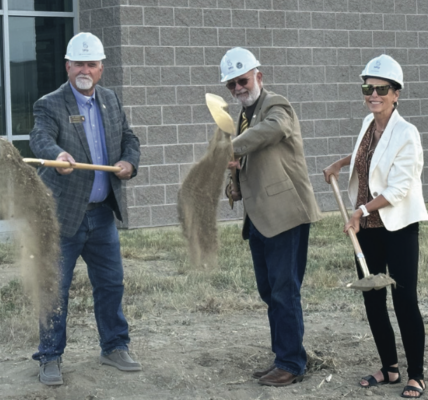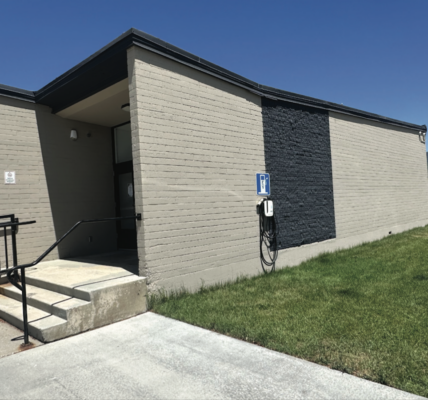
By Sophia Boyd-Fliegel
Jackson Hole Daily
Via- Wyoming News Exchange
JACKSON — As many as 26 homes on 12,000-square-foot lots can now legally be built for critical service providers in the Horse Creek neighborhood near Hoback.
On Tuesday, Teton County commissioners unanimously approved a rezone application from the Jackson Hole Community Housing Trust, changing 13.13 acres across from the KOA from a rural designation to suburban.
Instead of reaching up into the steep hills of the full 13.13 acres, the homes will be on the flat 6 1/2 acres near Highway 89 where the A-OK Corral has left the land “disturbed.”
During the meeting it seemed universally accepted that the Housing Trust rezone proposal was an extraordinary philanthropic darling.
In a novel paired donation, the Housing Trust will receive the land free from Paul and Kathy Spicer and $10 million for construction from the Wayne and Molly Hughes Charitable Trust.
The Hughes’ money is specifically for housing employees from 13 critical service organizations: 10 on the Human Services Council and three law enforcement agencies.
No members of the public said they were opposed to the rezone.
Leaders from the approved list of service organizations, including Teton County Sheriff Matt Carr and Sarah Cavallaro from Teton Youth and Family Services, said they were in desperate need of the housing.
Housing Trust Director Anne Cresswell said the project philanthropy was unlike anything her nonprofit had seen in 31 years.
The money would also help with a major concern shared by applicants, elected officials and community members: water.
“We get it, affordable housing is at a crisis level,” Protect our Waters Director Meghan Quinn said. “But Hoback drinking water is also at a crisis level.”
Water and housing advocates encouraged county commissioners to use the dual-crisis “opportunity” to take a comprehensive look at water quality south of town.
Commissioners were open to that idea, but didn’t dive into specifics of how it could happen.
A cap of 25 homes in the Housing Trust’s application was derived from Jorgensen Engineering’s water and sewer feasibility studies.
There is enough room, Thomas Kirsten of Jorgensen Engineering said, to have an “advanced wastewater treatment system.”
Alison Lee from the Housing Trust said maintenance and replacement of the wastewater treatment system would come from HOA fees.
There are still crucial questions that need answers, Kirsten said.
They already tested for bacteria, nitrate, metals, and select inorganic, radionuclides and synthetic and volatile organic compounds. The quality of water was all below the Environmental Protection Agency’s maximum contaminant level for drinking water, but the quantity of water available needs further investigation.
Housing Trust Director Anne Cresswell said the limiting factor for her was not where water would come from or how wastewater would be processed, but how much adequate treatment of water for the homes and the community would cost.
That will depend on Jorgensen’s next steps including a percolation test, hydrological studies, and pump tests.
Commissioner Luther Propst summed up his opinion of the project this way: “the location [is] not ideal, but that’s the county we live in.”
In a way, the application represented an affordable housing development trend.
As undeveloped private land in Teton County nears zero, development applications for higher density, deed-restricted housing are getting more “creative,” said Chief Deputy County Attorney Keith Gingery.
That means using conditional rezoning on the “legacy” suburban zone, which was supposed to be phased out in 2015.
“We try not to do conditional zoning,” Gingery said. “Our [land development regulations] never really contemplated that.”
But like the recently approved Lower Valley Energy employee housing rezone, suburban zoning is the only reasonable tool, Gingery said.
Since the Housing Trust had already recorded a deed that restricted development to the Housing Trust for affordable workforce housing, commissioners winnowed five of what they called “redundant” and “unnecessary” suggested conditions and left just one condition.
That one will require the Housing Trust to limit the number of units on the site to 26, one more than the nonprofit asked for in their application.
Gingery said the process reminded him of the bygone “planned unit development” tools, specifically for affordable housing, which the county got rid of in 2015 to keep developments predictable for landowners.
After this application, Commissioner Mark Newcomb said he’d think about a “potential moratorium” on the use of the suburban zone anywhere other than where it’s already in place.
Newcomb, who ultimately approved the application, said he wanted to see “community-wide discipline” around sticking with the zoning in the future.
It shouldn’t be up to subsequent commissioners to just keep making decisions “ad hoc,” he said.
Propst also said that he felt there could be a “slippery slope” with suburban zoning but was motivated to approve the application because of the housing crisis.
Commissioner Mark Barron’s last comments suggested, through sarcasm, that there’d be controversy around a moratorium on suburban zoning for affordable housing, which he said was currently the only tool used to create affordable housing.
“If Commissioner Newcomb does move for a moratorium on affordable housing [with] the use of the suburban, I really look forward to that, and I hope that happens before his election.”





